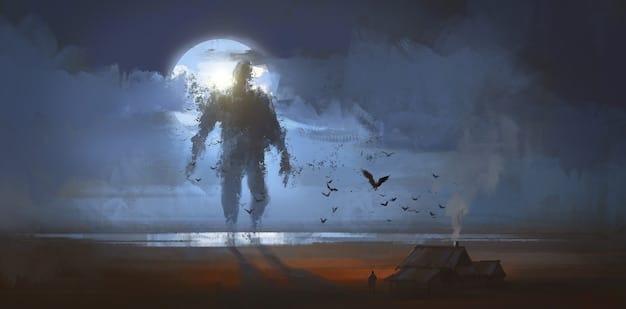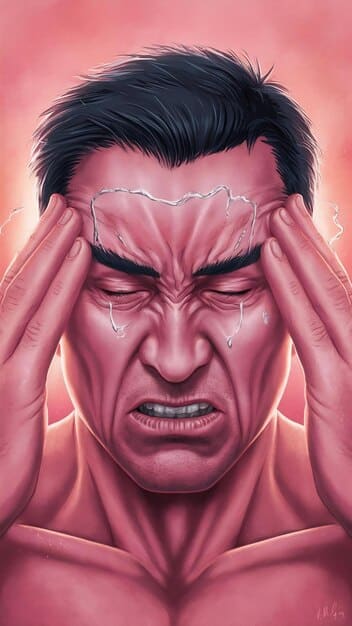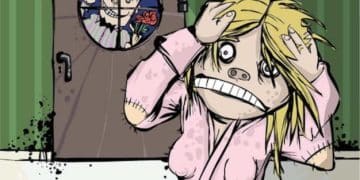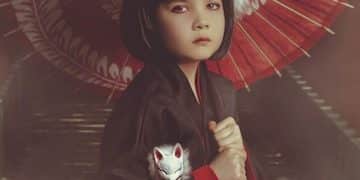Unseen Scars: Trauma and PTSD in Kentaro Miura’s Works

The Unseen Scars: Analyzing Trauma and PTSD in Kentaro Miura’s seminal manga, Berserk, delves into the profound psychological impacts of trauma on its characters, particularly Guts, exploring themes of resilience, survival, and the struggle against inner demons.
Kentaro Miura’s Berserk is not just a dark fantasy epic; it’s a profound exploration of the human psyche under extreme duress. The Unseen Scars: Analyzing Trauma and PTSD in Kentaro Miura’s masterpiece reveals how the characters grapple with the lasting impacts of their experiences, shaping their destinies in a brutal world.
The Dark World of Berserk: A Canvas for Trauma
Kentaro Miura crafted a world steeped in darkness and violence, making Berserk a potent setting for exploring trauma. The series doesn’t shy away from depicting the harsh realities faced by its characters, creating an environment where psychological scars are commonplace.
The Setting as a Reflection of Inner Turmoil
The bleak and unforgiving landscape of Berserk mirrors the internal struggles of its characters. The constant threat of demons and the ever-present violence serve as external manifestations of their inner turmoil.
Miura’s Mastery of Visual Storytelling
Miura’s exceptional artistry brings the world of Berserk to life, vividly portraying the physical and emotional toll that trauma takes on its characters. His detailed panels and dynamic compositions draw readers into the heart of the story.
- The environment plays a huge role in the psychological impact on characters.
- Miura uses stunning artistic visuals so the reader can feel the impact of trauma.
- The world of Berserk is dark and unrelenting, reflecting challenges characters face.
Through its grim setting and masterful visual storytelling, Berserk establishes itself as a powerful medium for examining the complexities of trauma and its far-reaching consequences.
Guts: A Case Study in Trauma and Resilience
Guts, the protagonist of Berserk, embodies the devastating effects of trauma. His early life is marked by violence, betrayal, and loss, laying the foundation for the psychological scars that haunt him throughout the series. His story is a testament to resilience as much as it is about the ravages of trauma.

Early Life Trauma and its Impact
Guts’s traumatic birth, brutal upbringing, and the betrayal by a father figure shape his worldview and his ability to form lasting connections. These experiences leave him emotionally guarded and perpetually on edge.
The Eclipse: A Defining Moment of Trauma
The Eclipse stands as the most horrific point in Guts’s life, where he endures unimaginable loss and witnesses atrocities that forever alter his psyche. He loses what he holds most dear and gains what haunts him most deeply.
- Born from the dead hanging body of his mother, this is Guts’s start in the world.
- Guts was raised as a mercenary from the age of 6, enduring constant fighting.
- The Eclipse is the ultimate trauma, costing Guts his arm and his loved one.
Guts’s journey is characterized by a constant battle against his inner demons, a struggle fueled by the deep-seated trauma he has endured. His ability to persevere, despite the odds, underscores both the destructive and transformative nature of trauma.
Griffith: The Trauma of Ambition and Betrayal
Griffith, the charismatic leader of the Band of the Hawk, undergoes his own descent into trauma, albeit a different kind than Guts. His ambition, pride, and the horrific consequences of his choices lead to a profound psychological transformation.
The Fall from Grace
Once revered as a visionary leader, Griffith’s downfall begins with his imprisonment and torture. The physical and emotional pain he endures shatters his spirit and sets him on a dark path.
The Sacrifice and Transformation
Driven to the brink of despair, Griffith makes a fateful decision to sacrifice his comrades in exchange for power, solidifying his transformation into Femto, a member of the God Hand. This act is both a cause and result of his trauma.
- Griffith’s ambition drives much of his character.
- Griffith falls from grace once he is imprisoned and tortured.
- Griffith sacrifices the Band of the Hawk to become Femto.
Griffith’s story serves as a cautionary tale about the corrupting influence of power and the devastating consequences of unchecked ambition. His trauma leads him to commit unspeakable acts, forever altering the course of Berserk’s narrative.
Casca: The Scars of Sexual Violence and Recovery
Casca, a strong and capable warrior, is subjected to horrific sexual violence during the Eclipse, leaving her with severe PTSD and memory loss. Her journey towards recovery is a central theme in Berserk, exploring the long-term effects of trauma on women.
The Eclipse and its Devastating Impact
The sexual assault Casca suffers during the Eclipse shatters her sense of self and leaves her emotionally and psychologically scarred. She is left unable to function normally, losing her memories and her ability to speak.
The Long Road to Healing
Casca’s recovery is a slow and arduous process, marked by setbacks and moments of progress. With the help of Guts and her new companions, she gradually confronts her trauma and begins to heal.

- Casca became a warrior and commander in a man’s world.
- The Eclipse caused Casca untold trauma, becoming a broken character.
- Casca’s journey is about healing and regaining her sense of self.
Casca’s story humanizes the devastating consequences of sexual violence and underscores the importance of support and understanding in the healing process. Her resilience and eventual recovery offer a glimmer of hope amidst the darkness of Berserk.
Coping Mechanisms: Survival in a World of Despair
The characters in Berserk develop various coping mechanisms to deal with their trauma and the constant threat of violence. These strategies, while sometimes destructive, are essential for their survival in a world filled with despair.
Guts’s Rage and Determination
Guts channels his trauma into a fierce determination to survive and protect those he cares about. His rage becomes a weapon, allowing him to confront seemingly insurmountable odds.
Casca’s Regression and Gradual Reintegration
Casca initially retreats into a childlike state as a way to cope with her trauma. Over time, she gradually begins to reintegrate into the world, finding solace in her relationships with others.
The struggles the characters face are reflective of the world they live in and the challenges they face along the way. The coping mechanisms they develop allow them to push through to protect themselves and others along the way.
The Enduring Legacy of Berserk: A Reflection on the Human Condition
Berserk’s exploration of trauma and PTSD has resonated with readers worldwide, solidifying its place as a seminal work of dark fantasy. The series offers a powerful commentary on the human condition, highlighting the resilience of the human spirit in the face of unimaginable adversity.
Themes That Resonate With Fans
Berserk’s themes of trauma, survival, and the struggle against inner demons strike a chord with readers who have experienced similar challenges in their own lives and the series does not dismiss the impact of trauma and violence.
Miura’s Impact on the Manga Landscape
Kentaro Miura’s work has had a profound impact on the manga landscape, inspiring countless artists and writers to explore complex themes and push the boundaries of the medium.
- Berserk has had a powerful impact on the manga industry.
- The human themes resonate with people across the fan base.
- The story explores the darker side of humanity.
Berserk remains a testament to the power of storytelling to explore the darkest aspects of the human experience while offering a glimmer of hope for healing and redemption. The series leaves a lasting impression on anyone who has read it.
| Key Point | Brief Description |
|---|---|
| 💔 Guts’s Trauma | Details Guts’s brutal upbringing and Eclipse trauma. |
| ⚔️ Griffith’s Fall | Explores Griffith’s ambition, torture, and sacrifice. |
| 🛡️ Casca’s Recovery | Focuses on Casca’s PTSD and journey to healing. |
| 💪 Coping Mechanisms | Highlights how characters like Guts and Casca adapt. |
FAQ
▼
PTSD, or Post-Traumatic Stress Disorder, in Berserk is shown through characters like Casca who experience flashbacks, anxiety, and emotional distress after traumatic events like the Eclipse. It significantly impairs their ability to function normally.
▼
Guts copes with his intense trauma by channeling his pain into rage and a relentless determination to protect others. This manifests as a fierce fighting spirit and a constant need to confront his enemies directly.
▼
The Eclipse is a pivotal event in Berserk, causing severe trauma for many characters, especially Guts and Casca. It involves unimaginable loss, violence, and betrayal, leading to lasting psychological scars.
▼
Healing from trauma in Berserk is depicted as a long and difficult process, with characters experiencing setbacks and slow progress. Support from others and confronting their past are crucial steps toward recovery.
▼
Berserk deeply explores trauma by realistically portraying its effects on characters’ mental health, relationships, and overall well-being. The series doesn’t shy away from depicting the harsh realities of trauma and its long-lasting impact.
Conclusion
In conclusion, Kentaro Miura’s Berserk offers a profound and unflinching examination of trauma and PTSD, portrayed through its characters’ struggles, resilience, and the bleak world they inhabit. The series’ enduring legacy lies in its ability to resonate with readers on a deeply emotional level, shedding light on the human capacity to endure and, perhaps, overcome even the darkest of experiences.





